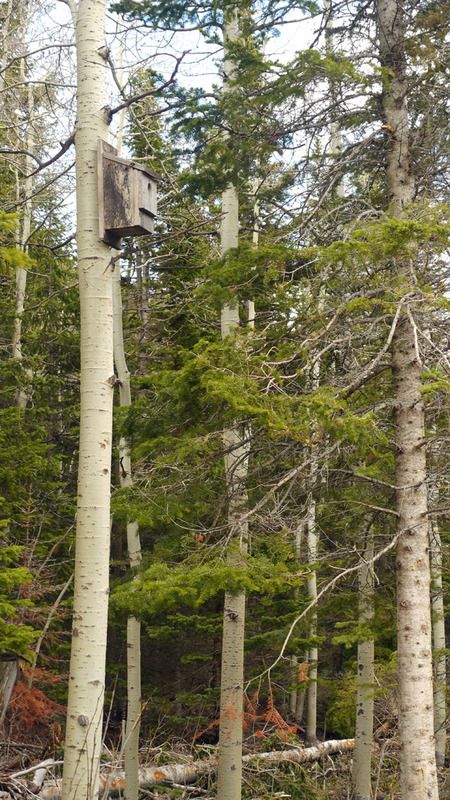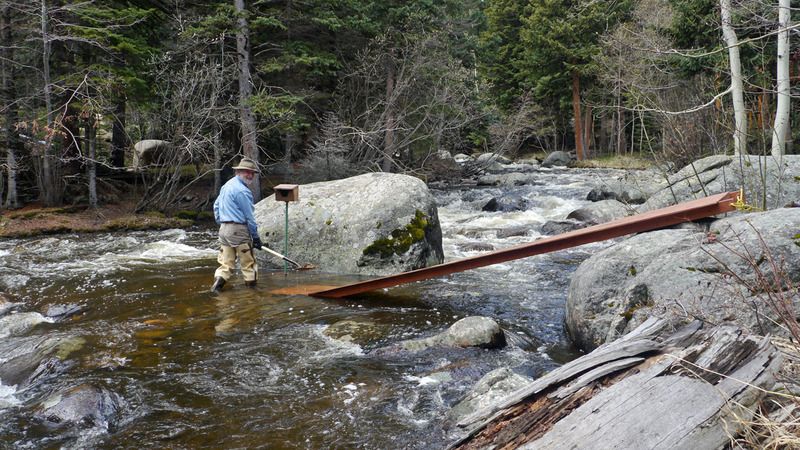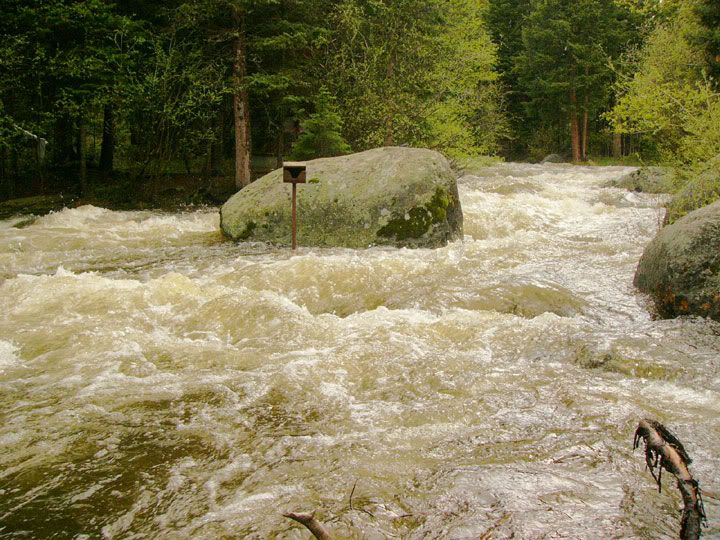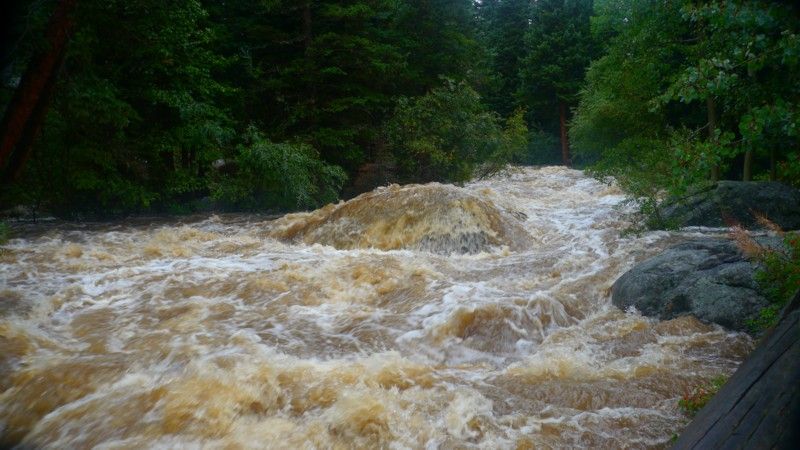Moving on from the scatological diaries....
I'm a big proponent of using bird nesting boxes to help bird populations and to bring them closer to home where we can watch them. In many wildland areas, cavity nesting birds lack suitable nest sites. This week I noticed a box up the mountain attached to an old aspen that had fallen to the ground. I built and put that box up almost 30 years ago and it's mostly been used by House Wrens. I brought the box down and re mounted it 14 ft. off the ground on an aspen in a little meadow by the house hoping to attract Violet-green Swallows back to the yard. Yesterday, a Mountain Chickadee explored and probably claimed the box.
As the river is rapidly rising today I decided it's now or never to replace a dipper nesting box in the stream that was lost in the Big Flood of 2013. Dippers nest in gourd-like cavities they build of moss, on ledges that directly hang over water. Sometimes they nest on bridge structures, on boulders, and sometimes on ledges behind waterfalls. It protects them from mammalian predators.
My home dipper nest box is attached to a steel pole anchored to a concrete base. The base is cast with a 1" galvanized pipe built into it for the nest box pole. The river pool next to shore is too deep too wade in, so I used a 16 ft. pump jack scaffold plank to bridge into the stream so I could move a 175 lb. concrete base into the river. I enlisted my longtime friend and neighbor to help with the project. I seeded the box with pieces of streamside mosses which the birds typically use for nest material.
A pair of dippers flew in and serenaded us with their melodious song as we were working.
BTW, we agreed that fishing waders always leak. And the water is always ice cold.
My dipper nesting boxes have been used on streams throughout Colorado for 34 years.
This is the normal annual high water:
This is from the historic flood of September 2013:
A male American Dipper brings steamside moss to build a domed nest inside the nest box.













 Reply With Quote
Reply With Quote
